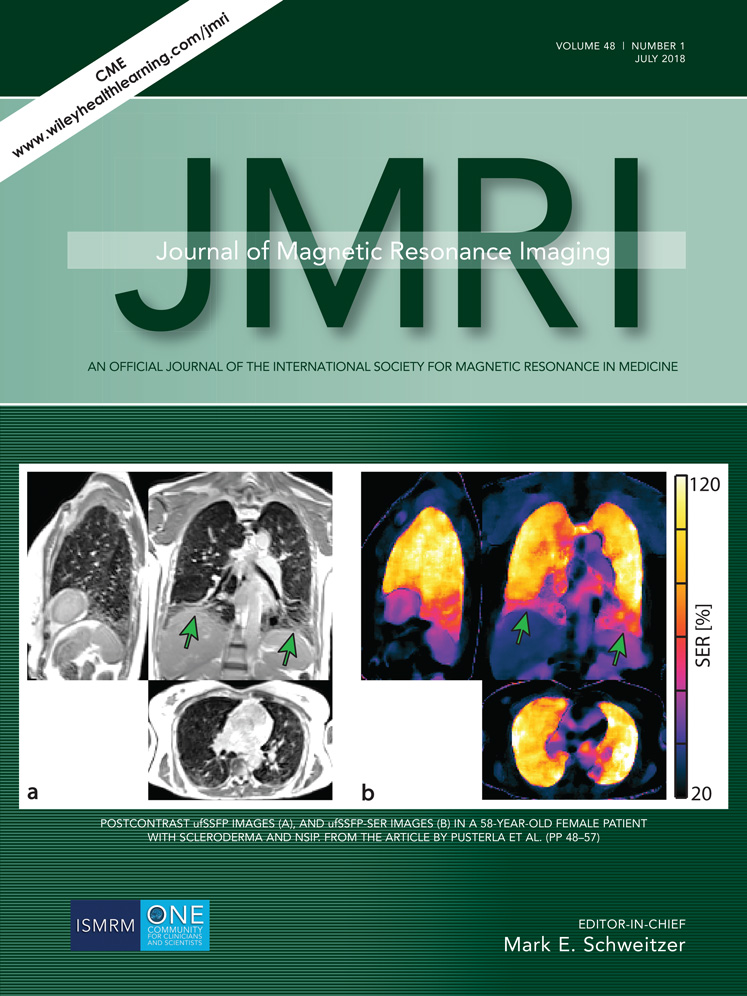Investigation of diffusion kurtosis imaging for discriminating tumors from inflammatory lesions after treatment for bladder cancer
Fang Wang and Di Jin contributed equally to this work.
Guang-Yu Wu, Xiao-Xi Chen, and Hai-Ge Chen contributed equally to this work.
Abstract
Background
The bladder wall may thicken resulting from chronic inflammation after initial treatment (transurethral resection [TUR] or neoadjuvant chemotherapy), which may mimic the feature of recurrent or residual bladder tumors (RBT). Therefore, it is critical to discriminate RBT from benign lesions after initial treatment.
Purpose
To investigate whether diffusion kurtosis imaging (DKI) could discriminate RBT from post-therapy bladder inflammatory lesions.
Study Type
Retrospective.
Subjects
Fifty patients diagnosed with bladder cancer underwent TUR or received neoadjuvant chemotherapy.
Field Strength/Sequence
3.0T MRI/conventional T1-weighted imaging (T1WI), T2WI, and diffusion-weighted imaging (DWI) with nine b-values ranging from 0–2000 s/mm2.
Assessment
Mean diffusion coefficients (MDa, MDb, and MDc) and mean kurtosis values (MKa, MKb, and MKc) were obtained from three different measurement methods. The region of interest (ROI) was placed 1) to encompass the entire portion of the thickening bladder wall or to portions that were the most restricted, with a b-value of 2) 2000 s/mm2 or 3) 1000 s/mm2.
Statistical Tests
The independent-samples t-test was used to compare the differences between RBT and the inflammatory group. Differences in DKI parameters were analyzed by comparing the areas under the receiver-operator characteristic curves (AUCs).
Results
In patients with RBT, the MD (MDa, MDb, MDc) values were significantly lower and the MK (MKa, MKb, MKc) values were significantly higher than those in patients in the inflammatory lesions group (all P < 0.01). The AUC of MKb (0.934) was significantly larger than those of MDb, MKa, and MKc (0.793, P < 0.05; 0.694, P < 0.01; 0.719, P < 0.01, respectively).
Data Conclusion
MK obtained from DKI provided better performance than conventional DWI in distinguishing RBT from inflammatory lesions after bladder cancer treatment. MK calculated with high b-values setting provided better performance in differentiation.
Level of Evidence: 1
Technical Efficacy Stage 3
J. Magn. Reson. Imaging 2017.




